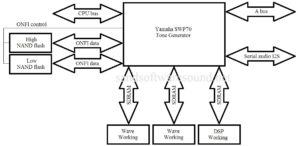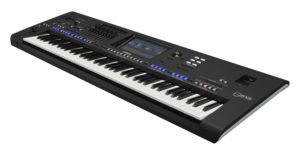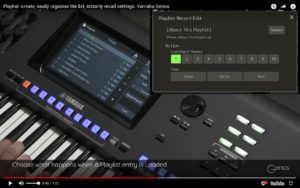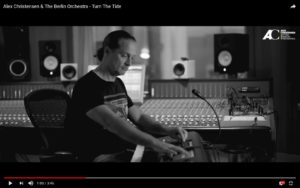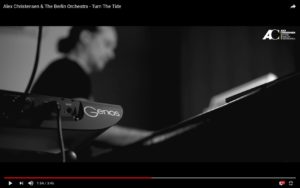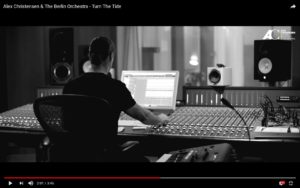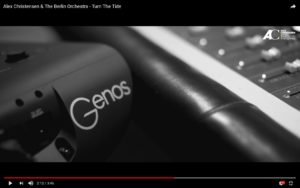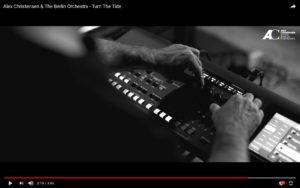With all of the Genos™ hoopla, let’s not forget about technique and skills! A few interesting questions popped up on the PSR Tutorial Forum and I’m reposting my answers here.
Today’s blog describes how to create a Mega Voice for PSR/Tyros using Yamaha Expansion Manager (YEM). With this background information in mind, I go on to discuss maximum polyphony in AWM2 and how to count voices against maximum polyphony.
The discussion has a PSR/Tyros focus, but a lot of the information applies to Motif, MOX and Montage, too. If you want to learn more about the Yamaha AWM2 voice architecture, I recommend reading the first chapter of a Motif- or Montage-series reference manual and the corresponding synthesizer parameter manual. (Download these manuals from the Yamaha manual library.)
Creating a Mega Voice in YEM
Regular voices are the usual MIDI voice: 128 velocity levels and only one basic sound. For example, nylon guitar is just the pitched, melodic sound of the notes either louder or softer depending on note velocity.
Mega Voice guitars (and other Mega Voices) are different. Please look at the Mega Voice Map starting on page 16 of the Tyros Data List PDF.
Let’s take a look at the Mega NylonGuitar voice. For MIDI notes B5 and below, the MIDI velocity is broken into eight (8) ranges:
1- 20 Open soft
21- 40 Open med
41- 60 Open hard
61- 75 Dead
76- 90 Mute
91-105 Hammer
106-120 Slide
121-127 Harmonics
Each range plays a different kind of sound. So, the MIDI velocity determines which guitar sound. Then, the velocity within that limited range determines how loud it will be.
Example 1: MIDI note A4, velocity 38 makes an Open Med guitar sound which is loud.
Example 2: MIDI note A4, velocity 2 makes an Open Med guitar sound which is quiet.
Example 3: MIDI note A4, velocity 110, makes a Slide guitar sound.
Now, let’s look at the last two columns in the Mega Voice map, again, for the Mega NylonGuitar voice. For MIDI notes between C6 and B7, the Tyros plays a Strum noise. The velocity in this case determines the Strum noise loudness over the full range 1-127.
For MIDI notes above C8, the Tyros plays a Fret noise. The velocity determines the fret noise volume and is full range 1-127.
Example 4: MIDI note D8, velocity 127 plays a very loud fret noise.
Put this knowledge into action with YEM
Now you need to figure out how to do this using the voice editor in Yamaha Expansion Manager (YEM). Each voice has up to eight elements. Think of each element as a mini, controllable synthesizer.
You will need one element for each of the velocity ranges that form the main body of your Mega Voice. In the case of the Mega NylonGuitar voice, that’s eight elements!
In YEM, build one element at a time. Layout the samples for one velocity range of the many body. You may have one waveform or you may have several waveforms. Each waveform occupies a key range. Do not map any waveforms onto the keys C6 and above (yet). These keys are reserved for the noise notes.
When you select a waveform belonging to an element, YEM highlights the color and displays eight resizing dots on the edges of the waveform. Use these dots to resize the waveform. Moving left or right changes the key assignment for the waveform. Moving an edge up or down changes the lower or upper limit of the velocity range to be assigned to the waveform.
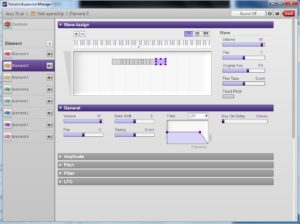
If you have a lot of samples, be prepared to do a lot of work! Now you’re learning how much work Yamaha puts into voice development!
Once you have assigned the waveforms (samples) for the main body of your new voice, you can work on the noise notes, that is, any keys C6 and above.
Select the first element. Assign the waveforms for the noise notes to the keys C6 and above. The actual layout is up to you, but you must use only the keys C6 and above.
If your noise notes have only one velocity range, 1 to 127, then you must set the velocity range for only those waveforms (1 to 127). If your noise notes have two or more velocity ranges (not recommended), then you must use more than one element.
So, you can see that YEM has enough editing power to create a Mega Voice. Be prepared to study carefully how Yamaha voices are constructed. Please don’t expect to just jump in, clap your hands, and be finished. I regard Mega Voice development as a fairly advanced, expert job. If you haven’t created a voice before using YEM, then I suggest trying something simple until you understand elements, waveform layout across keys, and velocity ranges.
Counting voices against maximum polyphony
Now that you’re schooled in voice structure, it’s a good time to discuss maximum polyphony and counting voice elements against maximum polyphony.
This has always been a somewhat confusing topic because of the way polyphonic voices are counted.
As I mentioned above, a Tyros or Motif or Montage (AWM2) voice consists of up to 8 elements. Assume that only the RIGHT1 part is enabled and thus, only one Tyros voice is enabled. When a key is struck, the AWM2 engine determines the active elements and assigns each active element to a physical-level, hardware tone generation channel. One or more elements may be active simultaneously for a given note under the assumption.
Assignment and channel use is additive. If RIGHT1 and RIGHT2 are enabled (i.e., two layered voices), then there are one or more active elements from the RIGHT1 voice and one or more active elements from the RIGHT2 voice. This is why layers chew up polyphony.
The number of tone generation channels determines the maximum number of active tones playing at any time — the maximum polyphony.
Be prepared to be confused!
Even if all eight elements are defined in a Mega Voice, not all eight elements may be active at a time. One to eight elements may be active depending upon the incoming MIDI note and the element programming (i.e., the velocity range and note range for each element.) When the synthesis engine gets a MIDI note (consisting of a MIDI note number and velocity), it decides which elements to play. If only one element matches, then only one polyphony voice is used up. If two elements match, then two polyphony voices are used up, and so on.
Thus, depending upon the combination of note ranges and velocity levels, a voice may use anywhere from one to eight voices of polyphony. It all comes down to the particular design (programming) of a user voice.
If you’re not confused yet, hold on, there’s more. In the past, a stereo voice would use two tone generation channels while mono uses one channel. The left waveform is assigned to an element and the right waveform is assigned to its own element. Montage and Genos have the new tone generator, the SWP70. The new tone generation hardware supports 128 mono/stereo voices (channels) of polyphony. That is, stereo elements get mapped to a stereo channel. This is a big deal because it allows greater use of stereo waveforms without cutting too deeply into the available polyphony.
Think like a coder
By now, if you’re a programmer, you’re thinking of pseudo-code somthing like:
if ((MIDI note number >= lowest key in key range) &&
(MIDI note number <= highest key in key range) &&
(MIDI note velocity >= lowest velocity in velocity range) &&
(MIDI note velcotiy <= highest velocity in velocity range))
{
Generate the tone for the MIDI note
}
This conditional statement summarizes what I discussed earlier.
As usual, there's more.
The AWM2 synthesis engine defines and evaluates other conditions:
- Detached (non-legato) or legato
- Articulation button ON or OFF
- Jump in note interval less than one octave
Motif and Montage people will recognize the first two conditions as Expanded Articulation (XA). PSR and Tyros people will recognize all three conditions as part of Super Articulation (SA). These additional conditions also control element triggering. Think about extending the pseudo-code's condition with other conjunctive terms.
The Motif and Montage voice editors expose the XA conditions. Yamaha Expansion Manager does not expose these conditions. Thus, it's not possible to create Super Articulation voices using YEM.
Copyright © 2017 Paul J. Drongowski


